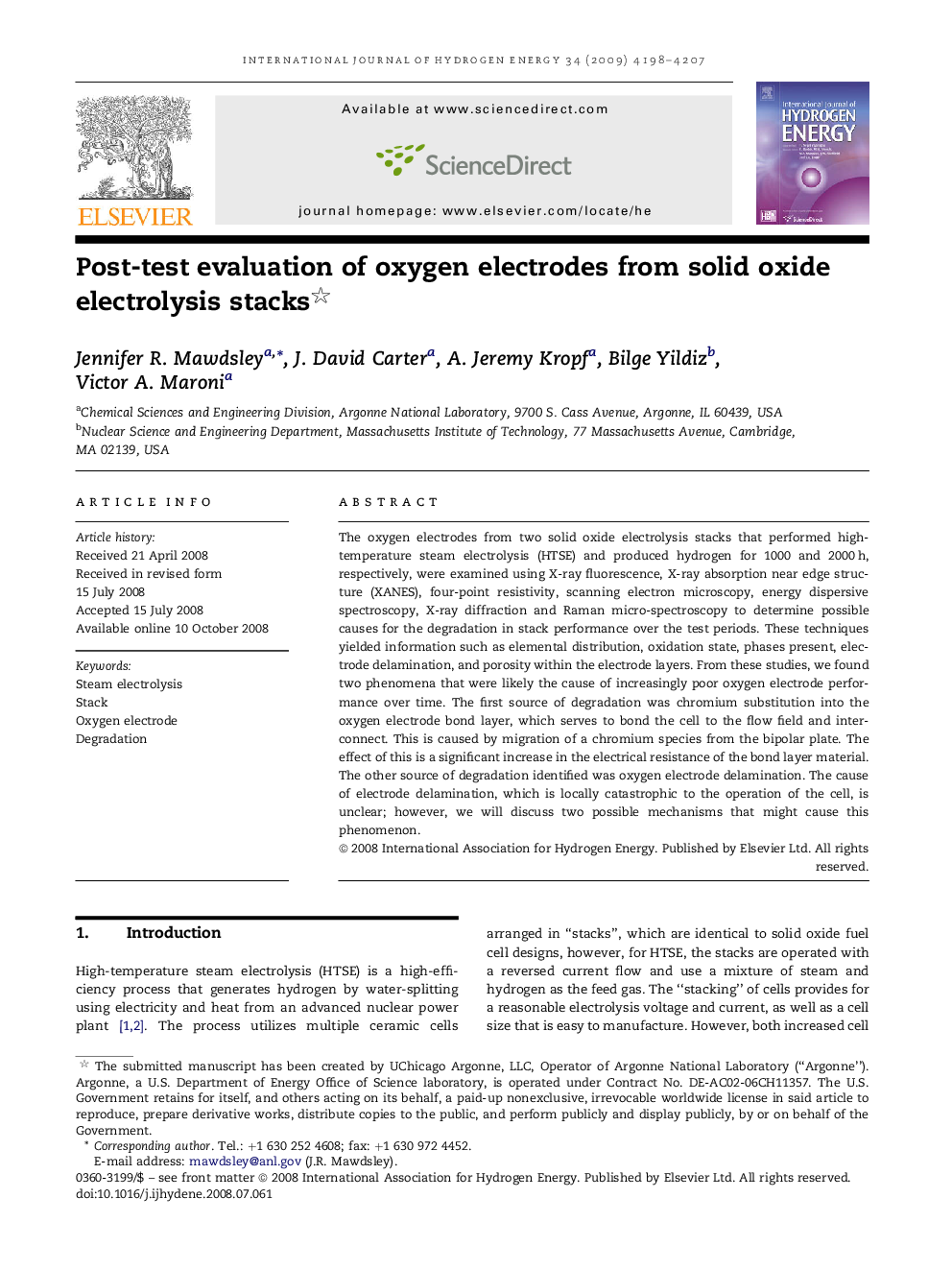| Article ID | Journal | Published Year | Pages | File Type |
|---|---|---|---|---|
| 1279054 | International Journal of Hydrogen Energy | 2009 | 10 Pages |
The oxygen electrodes from two solid oxide electrolysis stacks that performed high-temperature steam electrolysis (HTSE) and produced hydrogen for 1000 and 2000 h, respectively, were examined using X-ray fluorescence, X-ray absorption near edge structure (XANES), four-point resistivity, scanning electron microscopy, energy dispersive spectroscopy, X-ray diffraction and Raman micro-spectroscopy to determine possible causes for the degradation in stack performance over the test periods. These techniques yielded information such as elemental distribution, oxidation state, phases present, electrode delamination, and porosity within the electrode layers. From these studies, we found two phenomena that were likely the cause of increasingly poor oxygen electrode performance over time. The first source of degradation was chromium substitution into the oxygen electrode bond layer, which serves to bond the cell to the flow field and interconnect. This is caused by migration of a chromium species from the bipolar plate. The effect of this is a significant increase in the electrical resistance of the bond layer material. The other source of degradation identified was oxygen electrode delamination. The cause of electrode delamination, which is locally catastrophic to the operation of the cell, is unclear; however, we will discuss two possible mechanisms that might cause this phenomenon.
